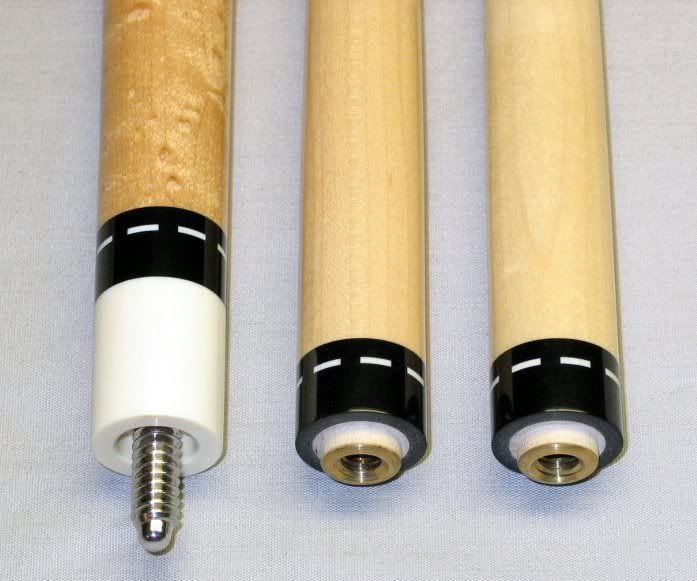Hi,
I'm wondering everybodys opinion on a piloted joint, where the nipple on the shaft is compressed by the joint collar when the cue is assembled.
Some argue it provides more feel, a better transmittion of feedback/energy, and guarantees against a false nodial point when the cue is forced to bend.
Cuemakers who i know use a compressed wood pilot joint are Szamboti, Tascarella, Black boar, Balabushka, Scruggs, and Searing. I have also seen some by some of these makers that do not
Schon, Joss, and most production cues do not. These joints are more of a floating brass pilot and really seem pointless to me, although these cues are often praised for their hits.
So does it really make a difference? When you compress a piece of wood side by side with another piece does it really transmit more feedback? What about false nodial points? How can anyone really tell?
-ian
I'm wondering everybodys opinion on a piloted joint, where the nipple on the shaft is compressed by the joint collar when the cue is assembled.
Some argue it provides more feel, a better transmittion of feedback/energy, and guarantees against a false nodial point when the cue is forced to bend.
Cuemakers who i know use a compressed wood pilot joint are Szamboti, Tascarella, Black boar, Balabushka, Scruggs, and Searing. I have also seen some by some of these makers that do not
Schon, Joss, and most production cues do not. These joints are more of a floating brass pilot and really seem pointless to me, although these cues are often praised for their hits.
So does it really make a difference? When you compress a piece of wood side by side with another piece does it really transmit more feedback? What about false nodial points? How can anyone really tell?
-ian
Last edited:


